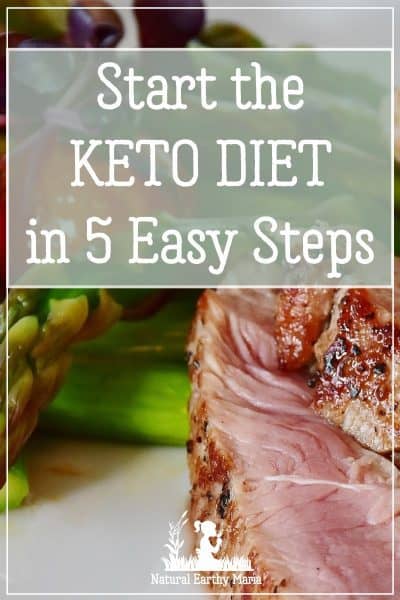 The ketogenic diet has so many health benefits and the research supporting this is just growing and growing.
The ketogenic diet has so many health benefits and the research supporting this is just growing and growing.
The ketogenic diet has been shown to be an effective long and short term weight loss solution, it reverses type two diabetes, is having amazing success treating many people with Alzheimers and it reduces the risk for cardiovascular disease and cancer.
Please read: This information is provided for educational purposes only and is not intended to treat, diagnose or prevent any disease. We encourage you to make your own health care decisions in partnership with a qualified health care professional.
This post contains affiliate links, this means at no extra cost to you, we make a commission from sales. Please read
our Disclosure Statement
What is the Keto Diet?
The ketogenic diet is based on whole real foods, where you limit your carbohydrate intake to less than 10% of your daily calories – usually under 50 grams total, or 20 grams nett.
You want to get enough protein to keep your body healthy, usually 1/2 a gram per pound of ideal body weight – for most people it is 60-80 grams per day.
Make up the rest of your calories from natural fats – butter, lard, tallow, duck or goose fat, meat fats in general, olive oil, avocado and raw, cold pressed nut oils – including coconut.
You will want to avoid the commercially produced industrial seed oils – canola, soy, corn and rice bran.
What to expect when starting the Keto Diet
As you start the Keto diet you begin to monitor what you are putting into your body.
As your insulin levels drop (from not having carbs all the time!) you will find that your body adapts, and your hunger will go away.
Your body is very intelligent and identifies that it needs more energy than what you are providing it. It will then search for different sources of energy since you are not providing it through food.
This is where your body will turn to the stored fats that are full of stored energy (this is how you can reduce your fat on your body).
Ketosis is when your body has run out of stored glucose/sugar in the liver and muscles, and starts burning fat instead. A by product of breaking down fat in the absence of sugar is a chemical known as ketones. These ketone bodies can be burned by your brain instead of glucose.
Ketones are harmless and natural and should not be confused with ketoacidosis which is a deadly condition that diabetics can find themselves in if their blood glucose levels get too high (read below for more on ketoacidosis).
The fruity, weird smell on the breath, however, is the same in both conditions, as that is the ketones that you can smell.
Who can Benefit from the Keto Diet?
If you have diabetes, the keto diet is thought to be a really good option for you. By lowering your carbohydrates intake you can support the balance of insulin in your blood, avoiding the spikes and crashes.
The above is also the same for people suffering from PCOS. In fact the reason that this type of diet is recommended for people with PCOS, is due to the effect that it has on insulin.
If you suffer from any heart disease or have concerns around your gut health, including Irritable Bowel Syndrome (IBS), the Keto Diet may help you manage or reduce these issues.
Do you struggle with acne? This diet can help you as you begin to balance out your hormones and reduce your sugar intake.
How do you know you are in Ketosis?
As a beginner Keto dieter you might be wondering how you will know if you are on the right track or not. These are some signs that you are certainly on right track to achieve ketosis.
Weight Loss
The first thing you may notice is weight loss. This is a positive sign, and probably the outcome you are most favorable of!
You are likely to hit a big weight loss in the first week – if this is the case for you, you are likely to have hit ketosis due to the diet you have had over the last week. Well done!
Please note that not everyone will experience this straight away or at the same rate. We all have unique bodies – which is amazing! Don’t compare yourself, set off on your own journey and own it!
Increased Energy
Suddenly you will realize that you have much more energy. Not the short bursts of energy, but consistent energy.
You will be focused and able to make decisions quickly. You are no longer tired, this is because you are fueling your body with food that makes it work correctly.
This is because your body is not having to work over time to process the rubbish food that you were feeding if prior to starting this way of eating.
Please note that short-term tiredness will certainly be there in the beginning as your body adjusts to the new foods you are eating. Stick with it – push through this. It is worth it.
RELATED POST: Surviving the Carb Flu
Loss of Hunger!
In case you don’t already know – fat fills you up! Because during the Keto Diet, you need to eat a lot of good fat, you will find that you do not need to eat as much or as often.
If hunger does still sneak in, I would suggest that you are not eating enough fats. Do not be afraid of fats in your diet – they are NOT the enemy!
Foods you can enjoy:
• Meat and fish
• Veges – green is best!
• Nuts and Seeds
• Eggs
• Butter, cream, cheese
• Healthy oils
• Salads
MORE FOODS YOU CAN EAT ON THE KETO DIET
Foods that you will need to avoid:
• Grains
• Alcohol – I know, how sad!
• Sugar – Sugar is terrible for your body!
• Root Vegetables
• “Low fat” and “diet” products (likely to gain their flavor from sugar)
—-basically anything with high carb content!
MORE FOODS YOU CANT EAT ON THE KETO DIET
A Note on Ketoacidosis:
High levels of ketones in your body can become dangerous. Ketoacidosis can only physiologically occur in diabetics.
Ketoacidosis is a state of very high ketones (over 15mmol) and very high blood sugars (over 20mmol).
You need to be aware that ketoacidosis is a life threatening condition and if you are a diabetic you need to watch your blood sugars closely while working with your doctor weaning off any medication.
Early signs of ketoacidosis are:
• Confusion
• Difficulty concentrating
• Abdominal pain
• Change in breathing
• Excessive thirst
• Feeling flushed
• Nausea and vomiting
If you notice any unusual changes in your body, please take these seriously and chat with a doctor.
How to Start the Keto Diet in 5 Easy Steps
Getting started on the ketogenic diet is overwhelming for first timers. So I have broken down how to start the keto diet in to 5 easy steps for you to follow.
RELATED POST: Keto and Cholesterol
1) Stop Eating Sugar
Sugar is the foundation of disease in our modern society. It is a big call, but I am going to make it. Sugar is inflammatory and addictive. Sugar raises your insulin levels in your blood, and this has ongoing, lasting consequences for your health.
When your insulin levels are chronically high, you retain salt and water, and in the high state of inflammation, you will gain weight, and your risk of all illnesses increases.
To quit sugar is simply that. Stop eating it.
Sugar is in so many things that you will be surprised about. It is in your bread, ketchup, mustard, mayonnaise, beets, pickles, peanut butter (why??)
Read the packets, if it has anything that sounds like a sugar, it is probably sugar. Coconut sugar, agave nectar, rice syrup, molasses, maltodextrin these will all raise your blood sugars and insulin levels, and they have got to go.
RELATED POST: How I Quit Sugar
Fruit is also full of sugar, especially modern varieties of fruit! Small volumes of berries are ok on occasion, but generally you want to skip the fruit as well.
2) Stop Eating Grains and Starchy Foods
Next on the list are all the things that your body will simply convert straight to glucose. Now it doesn’t matter if these are “slow release’ or “low GI” or whatever, grains and starchy foods raise your blood sugars and your insulin levels.
Grains – corn, wheat, barley, rye and oats – are all very inflammatory and are best avoided in life in general.
Other starchy foods like sweet potato, potato, yams, rice, quinoa, cous cous, bread, pasta (even gluten free!), tapioca, taro and most vegetables that grow under the ground are considered starchy. These foods will also spike your insulin, and should be avoided on the keto diet.
3) Eat Vegetables that grow Above the Ground
Most vegetables that grow above the ground are considered fine on the ketogenic diet. Leafy greens are the best. They are full of potassium and other essential nutrients. Try to have at least 2-3 cups of leafy greens each day.
Other vegetables that you can have in lesser volumes are tomatoes, bell peppers, cucumbers, turnips, radishes, and carrots.
4) Eat your Protein
Ideally you will be getting about 70- 100g of total protein per day. As no food is 100% protein, you will need to be eating about 300-400g of protein foods per day, these can include meat, fish, eggs, hard cheese, cream cheese and nuts.
With the cheese, cream cheese and nuts, you need to watch the carb content, as these are very easy to over eat and they are not zero carb options like meat or fish.
5) Eat Good Fat
The ketogenic diet is based on the idea that we should be using fat not sugar as our fuel source. To do this effectively 60-80% of your calories should be coming from fat.
These fats should be naturally occurring fats like ghee, butter, tallow, dripping, lard, olive oil and coconut oil, as well as foods like avocados, fish, eggs and meat.
Avoid all the highly processed oils – peanut, canola, soy and corn as well as trans fats in margarine and commercially fried foods – these oils are not only very inflammatory, but your body doesn’t know how to use them well as fuel.
Eat enough fat that you can go from one meal to another without being hungry and needing a snack. As your body adjusts to burning fat as fuel you will find that you can eat slightly less fat and your body will access your body’s own stores of fat and the weight loss will really begin.
The closer you are to your ideal weight, the more fat you will have to incorporate in to your diet to stay satisfied. Trust the process and follow your hunger cues.
RELATED POST: Keto and Fertility
That is it! How to start your journey on to the ketogenic diet really is that easy! Go here for a list of foods you can eat to print off for your fridge.
If you are interested in being guided through the ketogenic lifestyle check out our Keto Kickstarter, or if you want some real accountability with Real Results, join our next Simply Ketogenic Life Bootcamp.

